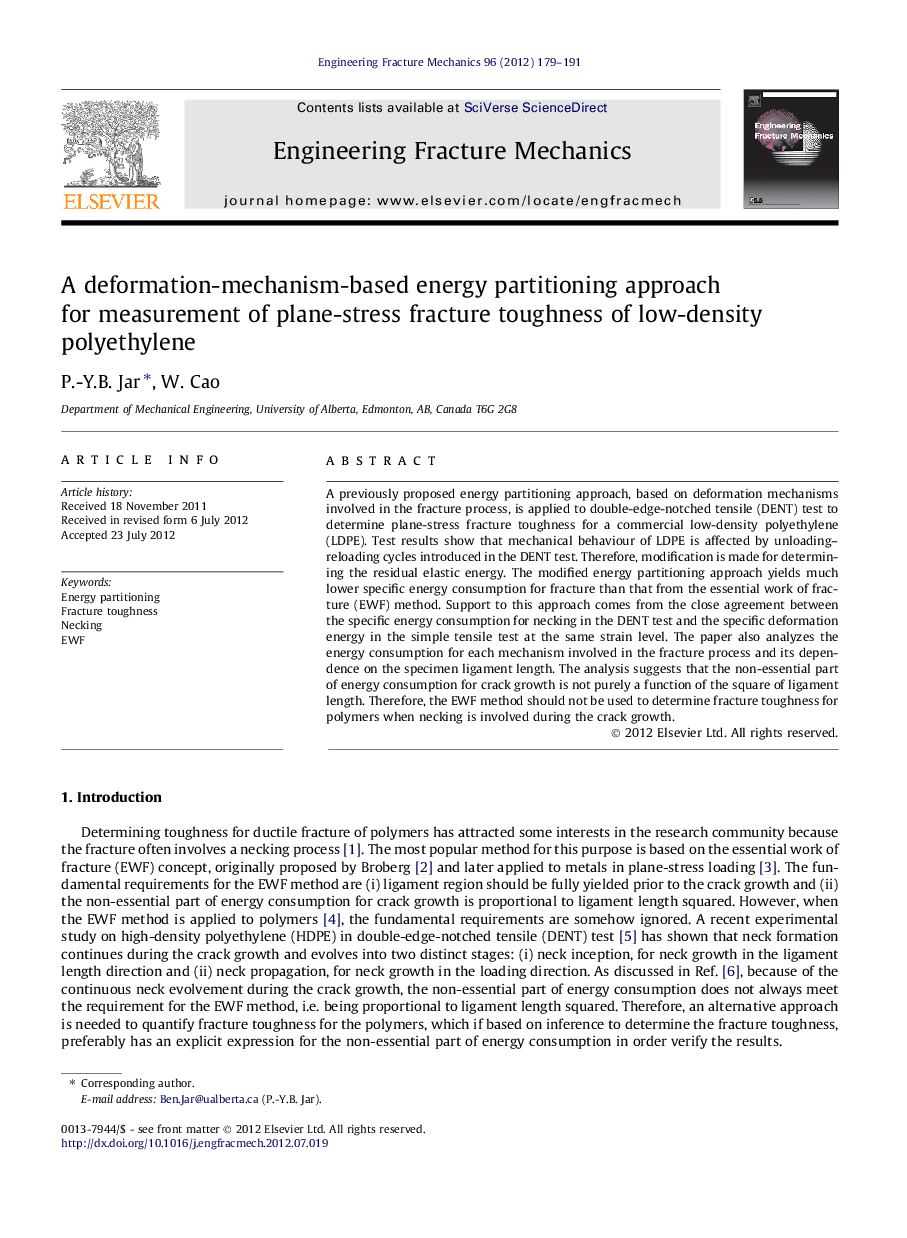| Article ID | Journal | Published Year | Pages | File Type |
|---|---|---|---|---|
| 770938 | Engineering Fracture Mechanics | 2012 | 13 Pages |
A previously proposed energy partitioning approach, based on deformation mechanisms involved in the fracture process, is applied to double-edge-notched tensile (DENT) test to determine plane-stress fracture toughness for a commercial low-density polyethylene (LDPE). Test results show that mechanical behaviour of LDPE is affected by unloading–reloading cycles introduced in the DENT test. Therefore, modification is made for determining the residual elastic energy. The modified energy partitioning approach yields much lower specific energy consumption for fracture than that from the essential work of fracture (EWF) method. Support to this approach comes from the close agreement between the specific energy consumption for necking in the DENT test and the specific deformation energy in the simple tensile test at the same strain level. The paper also analyzes the energy consumption for each mechanism involved in the fracture process and its dependence on the specimen ligament length. The analysis suggests that the non-essential part of energy consumption for crack growth is not purely a function of the square of ligament length. Therefore, the EWF method should not be used to determine fracture toughness for polymers when necking is involved during the crack growth.
► Develop a new approach to quantify fracture toughness of LDPE when necking during the crack growth. ► Verify the new approach through comparing specific necking energy with that from tensile test. ► Show that the EWF method is not suitable for toughness characterisation of LDPE.
